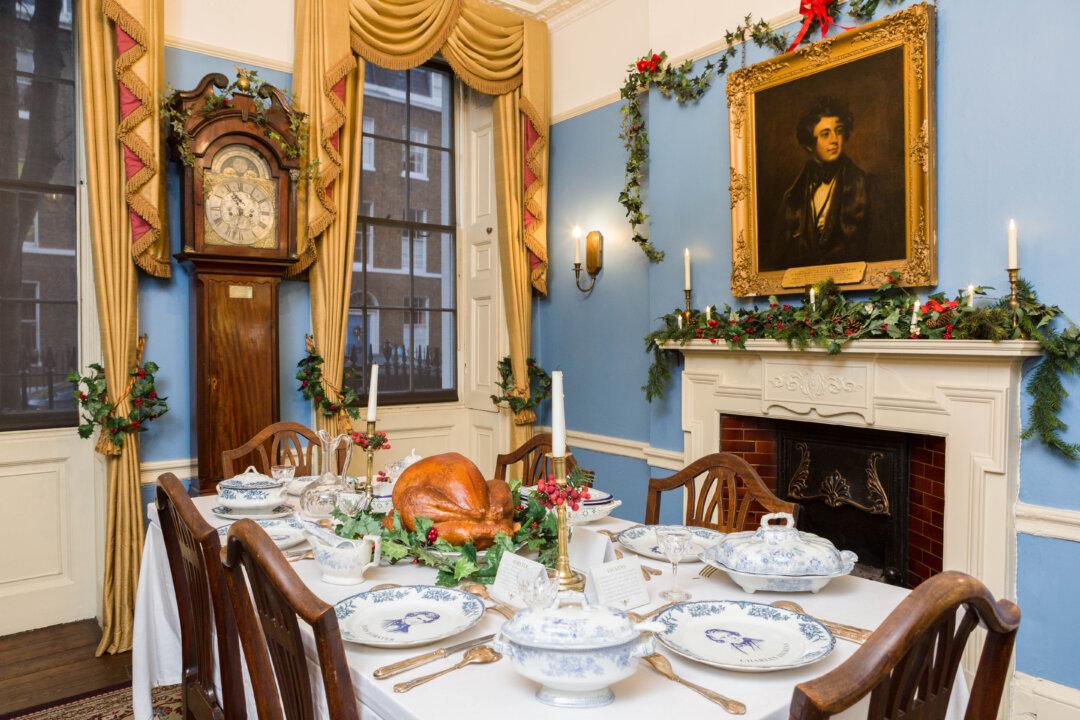Charles Dickens is largely responsible for our idea of Christmas today, more than 170 years after he published his Christmas books. He could be called the father of Christmas itself, or rather, of the business of Christmas. Of course, it’s not all down to Dickens. Many changes were afoot in Britain in the 18th and 19th centuries.
The recently opened exhibition “Beautiful Books: Dickens and the Business of Christmas” explores the blossoming industry of Victorian publishing and Dickens’s Christmas books, alongside other artifacts that illustrate how Christmas publishing developed the modern idea of Christmas.






